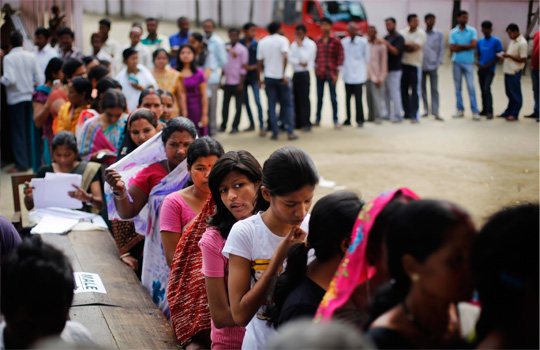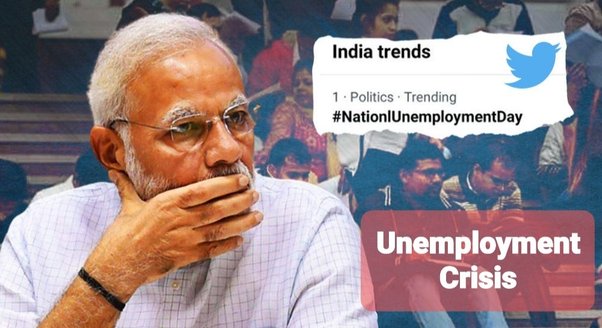Over 46,000 Graduates Fighting for Sanitation Jobs: Is This What India’s Future Looks Like? Where Are the Real Opportunities?
In a staggering reflection of the deepening unemployment crisis in India, particularly in Haryana, over 46,000 graduates and postgraduates have applied for sanitation worker positions. These positions, typically considered low-skilled and paying a modest ₹15,000 per month, have become a hope for many individuals struggling to find employment in their chosen fields. This article delves into the specifics of this situation, the broader context of unemployment in India, and the systemic issues that have led to such a scenario.

The Job Situation in Haryana
The HKRN data reveals that from August 6 to September 2, 2024, 39,990 graduates and 6,112 postgraduates applied for the post of sanitation worker. The total is an astonishingly huge number of 46,102 overqualified applicants for the position being offered. Another 117,144 applicants with education up to Class 12 further applied for the posts, depicting desperation for stable employment across different classes of education.
The post offered by HKRN is contractual in nature, carrying a monthly salary of ₹15,000. The job involved cleaning, sweeping, and removal of garbage from public areas, roads, and buildings-a job usually not associated with highly educated individuals. However, the current economic glut has forced many individuals to keep aside their degrees and aspirations and move for any available job that provided them with a regular income.
Why Are Graduates Applying for Sanitation Jobs?
There are many reasons at the root of this disturbing trend. First, because of poor job prospects in fields related to the applicants’ qualifications, a large number of such applicants have kept them continuously jobless. One such applicant is 29-year-old Rachana Devi of Sirsa, Haryana, who has completed her degree in nursery teacher training and is doing her master’s in history. This girl with qualifications has remained jobless for the last four years. She had applied for this sanitation worker post because no prospects were available in her field of specialization, which indicates the dismal employment situation in the region.
Similarly, the auxiliary nursing midwife Manisha and her husband Danish Kumar, graduate with BEd, have also applied as a sanitation worker. A qualified couple is still jobless and ready to accept whatever job comes their way that would bring bread and butter.
This phenomenon in Haryana, in fact, reflects the national trend with high education levels applying for low-skill jobs. According to the Periodic Labour Force Survey released on August 16, 2024, unemployment among people aged between 15 and 29 years in urban areas of Haryana increased to 11.2% in the April-June quarter compared to 9.5% in January-March.
For women in the same age group, unemployment rose from 13.9% to 17.2%. These, without doubt, are sure pointers to the gravity of the unemployment crisis that stares the state in the face.
The Broader Context of Unemployment in India

Unemployment in Haryana thus reflects the small units of a broader problem which is embodied in India. According to an estimate by a report, India Employment Report 2024, one in every three youths in the country does not have employment.
It points out that the rate of unemployment has gone as high as 29.1% even among graduate-degree holders, which raises serious questions as to the effectiveness of both the country’s education system and the economy in generating suitable jobs for the skills and aspirations of its youth.
With 1.4 billion people, India is one of the largest markets in the world. People need goods and services endlessly, from food and clothes to education and healthcare.
Despite this fact, the country is struggling hard to create enough employment opportunities for its ever-increasing population. This paradox of India is now the fifth-largest economy in the world but is simultaneously facing an unemployment crisis that reflects more serious fundamental structural problems in the economy.
The Role of Government Policies
The role of the government is highly debated and forms the axis of an unemployment alleviator. The Narendra Modi-led government has constantly been criticized for not answering its promise of providing crores of employment. The role of the government has been highly debated as being an unemployment alleviator. While the launch of programmes such as “Make in India” and “Skill India” was facilitated by the government, their effect on employment generation was negligible.
The state government has done much for generating employment opportunities, says the BJP leader Praveen Attrey, who is also the media secretary to Haryana’s Chief Minister Nayab Singh Saini.
He said the Haryana government has provided 1,45,000 regular government jobs in the last decade and facilitated self-employment and private sector job avenues for 37 lakh youth. As many as 1,20,000 people were also hired on a contract basis through HKRN. Yet, all these efforts notwithstanding, the unemployment crisis is continuing to deepen in Haryana and elsewhere in the country.
Unemployment
The unemployment crisis in India flows from structural factors at play over several decades. Perhaps the most important single factor is the mismatch between the educational system and the requirements of the job market. While millions graduate every year, the jobs available-most specially those that require higher education-do not show a proportionate increase.
For example, in the country, there are about 108,000 MBBS seats for medical education. Coming to that, 140,000 seats were available for BDS. But over 2 million students applied for NEET UG in 2023, and that means only one out of every 15 students who aspires to be a doctor can get a seat in a medical college.
This situation is no different from what obtains in the field of engineering, where the number of available seats has fallen drastically, with most of the existing ones not being filled due to low-quality instruction and high costs of education in too many institutions.
Another major concern is that education has not been adequately infrastructured. Due to increasing numbers, the government has not invested sufficiently in increasing the capacity of colleges and universities.
The cost of education at private institutions is so high that on one hand it is way beyond the capacity of the majority to afford and on the other, it leads to a position where students either fail to start higher education or after graduating with huge debts discover to their dismay that there are no jobs in those fields.
The Impact of the Economic Slowdown

This trend of unemployment in India has been further aggravated by the economic slowdown. The manufacturing sector, which is supposed to be the generator of high employment, has been the worst hit. According to data from the Centre for Monitoring Indian Economy, or CMIE, jobs in the manufacturing sector fell from 51 million in 2016 to 36 million in 2023-a fall of almost 30%. These losses in manufacturing jobs have trickled into other parts of the economy and translated into an increase in unemployment rates.
The COVID-19 pandemic severely hit employment in India: during the first lockdown, more than 120 million Indians lost their jobs in April 2020. Since then, many of those jobs have been regained, but the general situation of employment remains very precarious and the majority of workers are seriously threatened by insecurity of employment and wages.
The Role of the Private Sector
Indian private enterprises equally contributed to the present crisis of unemployment, but many firms shy away from employing new workers despite high profits.
Instead, they have overworked their existing staff, which has resulted in a high level of burnout among the employees. For instance, 62% of Indian employees reported feelings of exhaustion from work, according to a survey by McKinsey Health Institute last year, making India the country with the highest rate of workplace burnout.
This is a trend that has been seen in most large companies: shrinking workforce with rising productivity. For example, despite handsome profits, companies such as Infosys and Wipro reported negative hiring in numbers for the last few quarters.
This may be an Indian phenomenon, but on a broader global stage, companies such as Amazon and Meta have carried out mass layoffs in recent times, further underlining the disconnect between corporate profitability and employment generation.
Possible Solutions
The unemployment problem in India has to be countered on many fronts. First and foremost, investments in education, especially expansion of access to quality and affordable higher education, will have to be colossal.
This would include increasing seats in medical and engineering colleges, enhancing teaching standards, and making education accessible to students from all walks of society.
Apart from education, the focus has to be on creating jobs in areas that have the potential for large absorption. Manufacturing, for instance, requires a boost in order to provide enough employable opportunities. This can be achieved through policy measures aimed at attracting investment in manufacturing and programs to support small and medium enterprises, usually the backbone of the economy.
The other important thing the government has to handle is job security and workers’ rights. Many workers in India are on contractual employment with no job security and at very meagre wages. Strengthening of the labour laws and ensuring the workers of fair wages and benefits will be important for improving the overall situation of employment in the country.
There is finally the need for deeper and more active coordination among government, private sector, and educational institutions to make certain that skills being imparted in schools and colleges would actually match the requirements in the job market. This could be facilitated through arrangements such as apprenticeships, internships, and vocational training courses where students can be given practical work experience to enhance their employability skills.
Over 46,000 graduates and postgraduates have applied for sanitation worker positions in Haryana underlines the seriousness of India’s unemployment crisis. It tells a lot about the joblessness, besides pointing at deeper structural faults in the education system and economy.
These challenges will need to be addressed collaboratively by the stakeholders involved, government, the private sector, and educational institutions themselves, so that an enabling environment is established in which everyone gets an opportunity to be gainfully employed.




